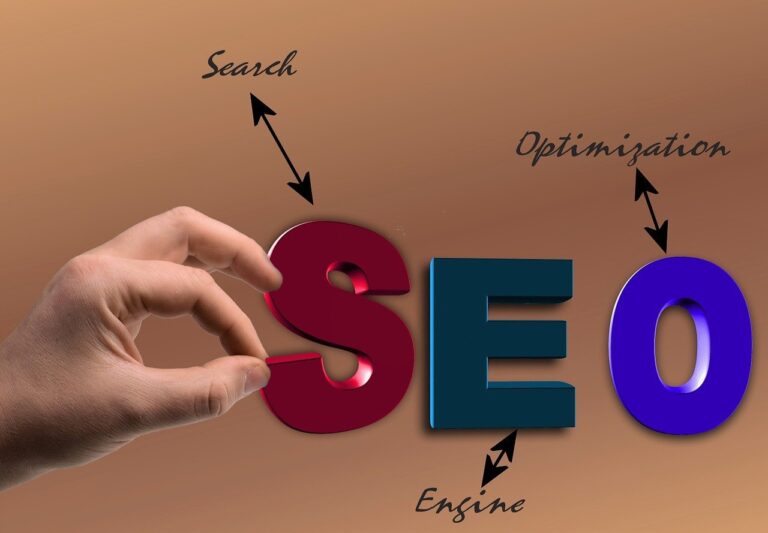Key Takeaways:
- Picking the right digital marketing channels is super important if you want to reach and engage your target audience the right way.
- Using a mixed bag of these channels together can help create a more unified strategy that really gets your message out there.
- It's also crucial to keep tabs on how well these channels are performing, making tweaks here and there to keep things running smoothly.
Digital marketing channels are like the roads and highways of the online world. They're the paths that businesses use to shout out about their products or services to the world. From the twists and turns of search engines to the bustling crowds of social media, these channels let you whip up tailored, data-smart campaigns that are crucial for growing your business and getting some solid gains. For B2B companies, dialing in the right digital channels can crank up your visibility, fire up your lead generation, and help you chat directly with your target audience, keeping you sharp and competitive in a market that never stands still.
Let’s dive into some of the digital marketing channels that B2B companies tap into, and chat about how to juice up these channels to beef up your online presence.
Key Digital Marketing Channels for B2B Success
Digital marketing channels are the lifelines for connecting with potential clients, boosting brand awareness, and fueling business growth. Each channel shines in its own way and is tailored for specific parts of customer interactions. By picking the right blend of channels, you can craft a unified strategy that amplifies your reach and ramps up engagement.
Here’s a rundown of the key digital marketing channels that B2B companies are leveraging today:
1. Content Marketing
Content marketing is all about crafting and distributing valuable, relevant, and consistent content to capture and keep the attention of a specific audience. Think blog posts, whitepapers, infographics, case studies, and videos that tap directly into the needs and challenges of your target market. By providing solutions and insights, content marketing not only establishes you as a thought leader but also builds trust within your industry, making your business a trusted resource.
2. Email Marketing
Email marketing sends customized messages straight to your leads and customers. Whether it’s through newsletters, product updates, or personalized offers, email campaigns are key for nurturing relationships, encouraging repeat business, and boosting brand loyalty. Thanks to tools like segmentation and automation, you can ensure the right message lands in the right inbox at just the right moment. It’s a powerful tool for driving conversions and keeping your audience engaged.
3. Search Engine Optimization (SEO)
SEO boosts your website’s visibility by helping it climb to the top of search engine results, putting your business right where potential clients are looking. Since most B2B buying journeys kick off with an online search, mastering SEO is crucial. It ramps up your organic traffic and cements your authority in your niche. A well-oiled SEO strategy not only pulls in more leads but also enhances the user experience and refines both the structure and content of your website, making it more relevant and engaging.
4. Social Media Marketing
Social media platforms such as LinkedIn, Twitter, and Facebook offer a direct line to engage with your audience in real time, share content dynamically, and build a community around your brand. For B2B companies, these platforms are particularly valuable for establishing professional relationships and demonstrating expertise. Social media marketing helps you not only connect with your target demographic but also allows you to showcase your industry knowledge and stay top of mind.
5. Pay-Per-Click (PPC) Advertising
PPC advertising puts your brand on the fast track to visibility, strategically placing ads on search engines and social media platforms where your audience spends their time. This channel is all about precision, enabling you to target your campaigns specifically to users based on demographics, locations, and even specific behaviors. The best part? You only pay when someone actually clicks on your ad, making PPC a cost-effective way to reach your target audience and gain immediate traction.
6. Affiliate and Influencer Marketing
Affiliate and influencer marketing tap into the power of partnerships and trusted voices within your industry. In affiliate marketing, you collaborate with affiliates who promote your products to their audiences for a commission. Influencer marketing works on a similar principle but focuses on leveraging influencers who have established credibility and a substantial follower base. Both strategies hinge on trust and authenticity, which can significantly boost conversions and foster long-term brand loyalty as these partners authentically recommend your products to their engaged followers.
7. Video and Live Events
Video marketing is becoming an essential part of the digital landscape, with formats like explainer videos and product demos proving incredibly effective at grabbing attention and conveying messages succinctly. On the flip side, webinars and live online events offer a more interactive experience, providing a platform for businesses to engage directly with a concentrated audience. These events are excellent for educating potential clients, deepening engagement, and fostering trust through real-time interaction and valuable content delivery.
Choosing the Right Digital Marketing Channels
Picking the right digital marketing channels is about understanding who you're talking to and aligning your efforts with your larger business objectives. Start by diving deep into your audience's behaviors and preferences. This understanding will guide you in prioritizing the channels that best foster meaningful interactions. For instance, while some of your audience might be more active and receptive on professional networks like LinkedIn, others might engage better with email campaigns or SEO-optimized blog content.
Next, align your channel choices with specific business goals. Are you looking to boost brand awareness, or are you after direct sales conversions? Maybe your aim is to establish long-term credibility, or perhaps you need immediate traffic boosts for quick gains. Each goal might lean you towards different channels, shaping where and how you invest your marketing efforts.
Lastly, consider your resource allocation – this includes time, expertise, and budget. Each channel demands different levels of each, and it's crucial to choose channels that not only align with your goals but also fit within your capacity to execute effectively. This approach ensures that you're not just active across multiple platforms, but also effective, maximizing your return on investment and maintaining high-quality execution throughout your strategy.
Integrating Digital Channels for Maximum Impact
To truly maximize the impact of your digital marketing, you need a strategy that ensures all your channels work together seamlessly, enhancing the overall customer experience at every touchpoint. This kind of coordination allows your business to connect with your target audience more effectively, delivering the right message at the right time and on the right platform. It also helps minimize any inefficiencies by leveraging the strengths of each channel to boost the others – for instance, using social media to increase traffic to your blog, or email campaigns to spotlight an upcoming webinar. This approach not only ramps up engagement but also fortifies customer relationships by providing a cohesive and memorable brand experience.
Here are three key strategies to integrate your digital channels effectively:
- Omnichannel approach: Ensure that your customers have a consistent and seamless experience, no matter how they interact with your brand – be it via email, social media, your website, or in person. This consistency builds trust and strengthens your brand identity. Imagine a customer journey that starts with exploring a product on your website, follows up with a personalized email, and culminates with a targeted ad on social media, all tailored to their preferences and behaviors.
- Cross-channel promotion: Use the strengths of one channel to enhance the reach and effectiveness of others. For example, a blog post that's optimized for SEO can also be promoted on social media, included in an email newsletter, or highlighted in a webinar. This not only expands your reach but also allows you to repurpose content efficiently, saving time and resources while boosting chances of engagement.
- Unified messaging: Consistency is crucial in building a strong, recognizable brand. Maintain a cohesive voice, tone, and visual identity across all channels. This unified messaging strategy ensures a smooth, integrated experience for your audience, making it easier for them to understand who you are and what you stand for.
By focusing on these elements, you can ensure that your digital marketing efforts are more integrated, efficient, and effective, leading to better customer relationships and higher overall engagement.
Optimizing Your Digital Marketing Strategy to Drive Growth
To drive growth through digital marketing, it's crucial to measure how each channel performs and continuously refine your strategy based on concrete data. This results-oriented approach helps pinpoint what's effective, tweak what isn’t, and maximize your return on investment (ROI). Whether you're fine-tuning PPC keywords, experimenting with different content formats, or A/B testing email subject lines, constant optimization is essential for sustainable success.
Key performance indicators (KPIs) play a vital role here. They offer a clear view of each channel's performance, helping you understand which strategies are hitting the mark and which need a rethink. Tools like Google Analytics, social media insights, and email marketing dashboards are invaluable in this process. They provide deep dives into audience behaviors, measure the impact of your tactics, and highlight areas ripe for improvement. Armed with these insights, you can make informed, data-driven decisions that sharpen your strategies and enhance the effectiveness of your campaigns.
By embracing these practices, you set the stage for a dynamic marketing strategy that not only adapts to changes in the market but also continuously evolves to meet and exceed your business goals.
Proven Strategies in Action: Success Stories
These two case studies illustrate the tangible impact of a well-executed digital marketing strategy and highlight the power of integrating multiple channels.
Example 1: Boosting Lead Generation with SEO and Content Marketing
A mid-sized B2B tech company faced stagnant lead generation despite a robust product offering. To address this, they invested heavily in SEO and content marketing. Their strategy included developing a comprehensive library of blog posts and whitepapers targeting industry-specific keywords that aligned with their audience’s pain points and queries.
To enhance their efforts, the company optimized their website for technical SEO by improving page speed, implementing structured data, and building high-quality backlinks. They also created gated content, such as downloadable eBooks and reports, requiring users to submit contact information to access the material.
The Results:
Over six months, the company achieved a 50% increase in lead generation, with a significant portion of leads coming from organic search traffic. Their gated content converted visitors into qualified leads, while their thought leadership pieces helped build trust and authority within their industry.
Example 2: Enhancing Brand Awareness Through Social Media and Influencers
A manufacturing firm struggled to stand out in a competitive market dominated by larger players. To improve their visibility, they launched a targeted social media campaign on LinkedIn, focusing on sharing behind-the-scenes stories, customer success testimonials, and thought leadership content.
To amplify their efforts, the firm partnered with industry influencers who had significant followings in their niche. These influencers shared the company's posts, endorsed their products, and hosted joint webinars to discuss industry trends, subtly promoting the brand.
The Results:
The campaign led to a 40% increase in brand reach and a noticeable uptick in audience engagement. Their LinkedIn follower base grew by 35%, and the webinars attracted high-quality leads that converted into long-term clients. The partnership with influencers not only enhanced credibility but also positioned the firm as an innovative leader in their industry.
Takeaway
Both examples highlight the benefit of integrating strategies like SEO, content marketing, social media, and influencer collaborations to drive measurable results.
Key Trends Shaping Digital Marketing
The digital marketing world is dynamic, continually evolving with new technologies and trends. Staying ahead of these changes is crucial to maintaining an effective and competitive strategy.
- Artificial intelligence and automation: AI is revolutionizing digital marketing by enabling more personalized experiences and automating routine tasks. Technologies such as chatbots and predictive analytics allow businesses to offer customized interactions at scale, improving customer engagement and operational efficiency.
- Voice search optimization: With the rise of voice-activated devices, optimizing for voice search is becoming increasingly important. This involves tailoring your digital content to perform well in search results for voice queries, which often means focusing on conversational keywords and providing clear, concise answers to common questions.
- Interactive content: Interactive content, including quizzes, polls, and interactive infographics, is becoming more popular due to its effectiveness in engaging users and extending their time on site. These formats not only make your content more engaging but also provide deep insights into user preferences and behaviors, helping to refine marketing strategies and content offerings.
By embracing these trends, you can ensure your digital marketing strategy remains ahead of the curve, resonating with current consumer behaviors and technological advancements.
Mastering Digital Marketing for Business Growth
As a B2B executive or marketing professional, it’s crucial to evaluate and strategically select digital marketing channels that align with your business objectives. By adopting a cohesive, multi-channel strategy and continuously optimizing your efforts, you can significantly enhance engagement, lead generation, and business growth.
This guide is your starting point for mastering the digital marketing landscape. Embrace these strategies, adapt to new trends, and propel your business to new heights in the competitive digital arena.
If you're looking for expert guidance and support, the Cureight team is here to help. Our experienced professionals specialize in crafting tailored digital marketing strategies, executing seamless multi-channel campaigns, and delivering measurable results. Whether you need help with SEO, content creation, or cross-channel integration, Cureight has the tools and expertise to elevate your marketing efforts and drive your business forward. Contact us today to take the next step in achieving your digital marketing goals!


